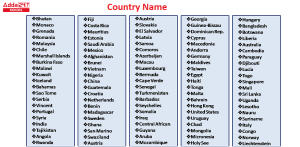Salary of President of India
The salary of President of India is discussed here. On September 11, 2008, the Indian government increased the president’s salary to 1.5 lakh rupees (approximately to 3.9 lakh in 2022). In India’s 2018 Union budget, this compensation was increased to 5 lakh (equivalent to 5.9 lakh in 2023). The President of India is the Republic of India’s head of state. The president is both the titular head of state and the commander-in-chief of the Indian Armed Forces. Check full Salary of President of India in 2023.
President Salary in India Per Month in Rupees
According to the constitution’s Second Schedule, the president of India used to be paid $10,000 every month. In 1998, the amount was raised to 50,000 (equal to 190,000 in 2020). On September 11, 2008, the Indian government increased the president’s salary to 1.5 lakh rupees (approximately to 3.6 lakh in 2020). In India’s 2018 Union budget, this compensation was increased to 5 lakh (equivalent to 5.9 lakh in 2022). Almost everything the president does or wants to do, however, is covered by a 225 million (equivalent to 530 million in 2020) annual budget set aside by the government for his or her upkeep.
The president’s formal house, Rashtrapati Bhavan, is the world’s largest presidential palace. The Rashtrapati Nilayam in Bolarum, Hyderabad, and the Retreat Building in Chharabra, Shimla, are the president of India’s official retreat residences. A custom-built, heavily armored Mercedes Benz S600 (W221) Pullman Guard serves as the president’s official state car. Former presidents, as well as their widows and widowers, are eligible for benefits such as pensions, furnished housing, security, and different allowances.
What is the Salary of Vice President of India 2023 in Rupees
The salary of the vice president of India 2023 is ₹ 2,38,385 – ₹ 2,48,026/month.
PM Salary in India
The salary of the Prime Minister of India is ₹2,00,000 per month. This amount includes a basic salary of ₹1,60,000, along with various allowances and perks. It’s worth noting that the Prime Minister also has access to numerous non-monetary benefits like official residences, staff, security, and other amenities, which are not part of the salary.
President of India Salary (Latest)
The president of India receives a monthly salary of ₹5 lakh (Indian Rupees), which amounts to ₹60 lakh per year. This information may be subject to change due to inflation or changes in government policies, so it would be advisable to refer to the most current resources for the latest figures. In addition to the salary, the President of India is entitled to various perks and benefits, such as an official residence, staff, and allowances for travel and entertainment, among other things.
The President of India
The president’s office was established when India became a republic on January 26, 1950, when its constitution went into effect. The president is elected indirectly by an electoral college that includes both houses of India’s Parliament as well as the legislative assemblies of each of the country’s states and territories, all of whom are directly elected.
Despite the fact that Article 53 of the Indian Constitution states that the president may exercise his powers directly or through a subordinate authority, all of the president’s executive powers are, in practise, exercised by the prime minister (a subordinate authority) with the assistance of the Council of Ministers. The president is required under the constitution to act on the prime minister’s and cabinet’s advice as long as it does not contradict the constitution. Ram Nath Kovind is the 14th and current President of the Republic of India, having taken office on July 25, 2017.
Powers of the President of India
The president of India has the responsibility and authority to defend and maintain the Indian Constitution and the rule of law, according to the Indian constitution. Any action performed by the executive or legislative branches of the constitution will always become law only once the president has given his approval. Unconstitutional executive or legislative measures will not be tolerated by the president. The president (Article 60) is the first, most powerful, and most immediate defender of the constitution, with pre-emptive ability to ensure constitutionality in executive and legislative activities. The judiciary’s role in maintaining the Indian Constitution is the second line of defence in overturning any unlawful measures taken by the Indian Union’s executive and legislative branches.
According to the Father of Indian Constitution, Dr. BhimRao Ambedkar, The President, in the draught constitution, holds the same position as the King in the English Constitution. He is the President of the Republic, but not the Executive. He is the Nation’s representative, but he is not the Nation’s ruler. He is the country’s symbol. In the administration, he serves as a ceremonial element on a seal that announces the nation’s decisions.
Legislative Power of the President of India
To expedite the lawmaking process, the Constitution of India has placed legislative power in the Parliament of India, of which the president is the head. The president calls both houses of parliament together and prorogues them. He has the power to dissolve the Lok Sabha. According to Article 87, the president addresses parliament after the general elections and also at the start of the first session every year (1). On these occasions, the president’s address is usually intended to lay forth the government’s new policies.
Executive Powers of the President of India
According to Article 53 of the constitution, the executive power of the country is vested in the president, who can wield it either directly or through officers subordinate to him. When parliament deems it appropriate, it may grant the president extra executive powers under Article 70, which the president may then delegate to state governors under Article 160. The president’s functions should be aided and advised by the Union cabinet, which is led by the Prime Minister. According to Article 74 (2), the president’s council of ministers or prime minister are not legally responsible for the advice they give him, but it is only the president’s responsibility to ensure that his duties are carried out in accordance with the constitution. Regardless of the union cabinet’s advice, the president or his subordinate offices are obligated by the constitution’s requirements. According to Article 142, it is the president’s responsibility to carry out the Supreme Court’s decisions.
Judicial Powers of the President of India
According to Article 60, the president’s principal responsibility is to preserve, safeguard, and defend the Indian constitution and law. On the advice of the Chief Justice of India, the president appoints the Chief Justice of India and other judges. A two-thirds vote of the two Houses of parliament is required for the President to dismiss a judge. The Attorney General of India, the Indian government’s top legal counsel, is appointed by the president of India under Article 76(1) and serves at the president’s pleasure. If the president believes a legal challenge or a problem of public interest has arisen, he may seek the Supreme Court’s advisory opinion under Article 143. According to Article 88, the president can request that the attorney general attend the parliamentary proceedings and report any illegal activity to him.
Eligibility for the President of India
Article 58 of the constitution lays out the basic requirements for running for president. A president must possess the following qualities:
- Should be a citizen of India
- Should be of 35 years of age or above
- Should be qualified to become a member of the Lok Sabha
If a person occupies a profit-making position under the Government of India, the Government of any State, or any local or other authority under the control of any of the said Governments, he is ineligible for election as president.
Certain officeholders, on the other hand, are allowed to run for president. These are the following:
- The current vice-president
- The governor of any state
- A Minister of the Union or of any state (including prime minister and chief ministers).
Rashtrapati Salary in India
भारत के राष्ट्रपति का वेतन
यहां भारत के राष्ट्रपति के वेतन पर चर्चा की गई है। 11 सितम्बर 2008 को भारत सरकार ने राष्ट्रपति का वेतन बढ़ाकर 1.5 लाख रूपये (2022 में लगभग 3.9 लाख) कर दिया। भारत के 2018 के केंद्रीय बजट में इस मुआवजे को बढ़ाकर 5 लाख (2023 में 5.9 लाख के बराबर) कर दिया गया। भारत का राष्ट्रपति भारत गणराज्य का राष्ट्रप्रमुख होता है। राष्ट्रपति राज्य का नाममात्र प्रमुख और भारतीय सशस्त्र बलों का कमांडर-इन-चीफ दोनों होता है। 2023 में भारत के राष्ट्रपति का पूरा वेतन देखें।
भारत के राष्ट्रपति का प्रति माह वेतन रुपये में
भारत के राष्ट्रपति का वेतन- संविधान की दूसरी अनुसूची के अनुसार, भारत के राष्ट्रपति को हर महीने 10,000 डॉलर का भुगतान किया जाता था। 1998 में, राशि बढ़ाकर 50,000 (2020 में 190,000 के बराबर) कर दी गई। 11 सितंबर 2008 को भारत सरकार ने राष्ट्रपति का वेतन बढ़ाकर 1.5 लाख रुपये (2020 में लगभग 3.6 लाख) कर दिया। भारत के 2018 के केंद्रीय बजट में इस मुआवजे को बढ़ाकर 5 लाख (2022 में 5.9 लाख के बराबर) कर दिया गया। हालाँकि, राष्ट्रपति जो कुछ भी करते हैं या करना चाहते हैं, वह उनके रखरखाव के लिए सरकार द्वारा निर्धारित 225 मिलियन (2020 में 530 मिलियन के बराबर) वार्षिक बजट द्वारा कवर किया जाता है।
राष्ट्रपति का औपचारिक घर, राष्ट्रपति भवन, दुनिया का सबसे बड़ा राष्ट्रपति महल है। हैदराबाद के बोलारम में राष्ट्रपति निलयम और शिमला के छराबरा में रिट्रीट बिल्डिंग, भारत के राष्ट्रपति के आधिकारिक रिट्रीट निवास हैं। एक कस्टम-निर्मित, भारी बख्तरबंद मर्सिडीज बेंज S600 (W221) पुलमैन गार्ड राष्ट्रपति की आधिकारिक राज्य कार के रूप में कार्य करती है। पूर्व राष्ट्रपति, साथ ही उनकी विधवाएँ और विधुर, पेंशन, सुसज्जित आवास, सुरक्षा और विभिन्न भत्ते जैसे लाभों के लिए पात्र हैं। इस लेख में राष्ट्रपति मूल वेतन पर्ची की जाँच करें।
Related Posts:
- Leave Application For Sister/Brother Marriage From Office/School
- What Is The National Language Of India 2022?
- Sustainable Development Project, Definition, Goals, Example For Class 10
- The Process Of Conversion Of Sugar Into Alcohol Is Called Fermentation
- BOD Full Form In Water & Biology
- Environmental Pollution Essay In English 1000 Words
- Application For Sick Leave For Office & School In English
- TGT Full Form: Trained Graduate Teacher
- Important Questions For Class 12 Computer Science Term 2 With Answers
- What Is Bond Order Of Co Molecule Is?









 Country Name in Alphabetical Order A to ...
Country Name in Alphabetical Order A to ...
 Eastern Ghats in India: Check Map, State...
Eastern Ghats in India: Check Map, State...
 Sustainable Development Project Class 10...
Sustainable Development Project Class 10...









